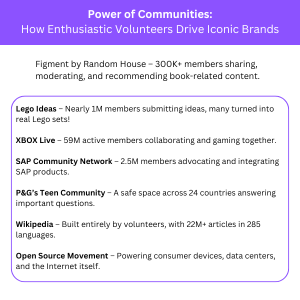Recently, Grubhub, a leading food delivery platform, reported a data breach caused by unauthorized access to customer contact information.
The breach, linked to a third-party service provider for Grubhub’s support team, exposed names, email addresses, phone numbers, and partial payment details of campus diners, merchants, and drivers.
Although Grubhub reassured users that no highly sensitive data, such as social security numbers or full payment details, were compromised, the incident raises concerns about the reliability and security of AI-driven food service platforms.
While cybersecurity is a critical issue, this event also underscores another persistent problem: AI’s struggle to accurately understand and fulfill food orders.
The limitations of food recommender systems, designed to personalize user experiences, often result in inaccurate suggestions, frustrating meal choices, and even potential health risks for users with dietary restrictions. But why does AI still struggle to get food recommendations right?
The Challenges of AI in Food Recommendation Systems
AI-driven food recommender systems rely on user data, algorithms, and vast recipe databases to suggest meals tailored to individual preferences. However, these systems still face fundamental challenges that hinder their accuracy and efficiency.
-
User Nutrition Information Uncertainty
Food recommender systems need accurate data on users’ nutritional requirements, meal history, and preferences. However, users often provide incorrect or incomplete dietary information, either by forgetting what they’ve eaten or deliberately omitting certain details. Systems like FOODLOG attempt to estimate nutritional intake, but even they struggle with precision. This inaccuracy leads to suboptimal meal recommendations, especially for users with strict dietary needs.
-
Challenges in Collecting User Ratings
User feedback is essential for refining AI-driven recommendations. However, many users find rating food tedious, leading to sparse and unreliable datasets. This lack of engagement limits AI’s ability to learn user preferences effectively, resulting in generic or irrelevant meal suggestions.
-
Algorithmic Limitations and the Cold-Start Problem
When a user first interacts with a food recommender system, the AI has limited data on their preferences. This cold-start issue often results in poor initial recommendations, discouraging further use. While AI can improve over time by analyzing past orders, this requires substantial user input and patience.
-
Recipe Database Constraints
A food recommendation system needs an extensive and diverse database of recipes to cater to various tastes and dietary needs. However, curating and maintaining such a database is challenging. Additionally, inconsistencies in nutritional information across different sources can lead to misleading recommendations. For example, the same ingredient can have different nutritional values depending on its preparation method, which AI struggles to account for accurately.
-
Balancing Constraints and Customization
Personalized meal recommendations must consider multiple factors: nutritional balance, ingredient availability, and user preferences. However, conflicting constraints can make it difficult for AI to generate viable meal suggestions. For example, a user may want a high-protein meal that is also low in sodium, but the system might not have enough recipes that fit both criteria, leading to limited or impractical recommendations.
-
Adapting to Changing Consumer Behavior
Eating habits are influenced by numerous factors, including cultural preferences, lifestyle changes, and seasonal availability of ingredients. AI struggles to adapt to these dynamic behaviors, often recommending meals based on outdated or irrelevant data. Additionally, encouraging users to adopt healthier eating habits requires a nuanced approach that AI has yet to master.
-
Lack of Effective Explanations and Visualizations
Users are more likely to trust food recommendations if they understand why a particular meal was suggested. However, many AI systems fail to provide clear explanations for their choices. Transparent visualizations of nutritional benefits and ingredient insights can enhance user confidence, but current food recommender systems often lack these features.
The Future of AI in Food Recommendations
Despite these challenges, AI-driven food recommendation systems have significant potential. By integrating health psychology theories, improving user interaction methods, and leveraging hybrid recommendation models (such as collaborative and content-based filtering), food tech companies can enhance the accuracy and reliability of their platforms.
Potential Improvements:
- Enhanced Data Collection Methods: Implementing wearable technology and smart kitchen devices to track real-time dietary intake.
- Gamification of User Ratings: Encouraging users to engage with rating systems through rewards or interactive features.
- Dynamic Recipe Adjustments: Allowing users to modify AI-suggested meals based on ingredient availability and personal taste.
- Personalized Health Insights: Providing real-time nutritional guidance based on user-specific health goals.
- Improved Security Measures: Learning from incidents like the Grubhub data breach to strengthen cybersecurity and build user trust.
While AI has made strides in personalizing food experiences, it is clear that significant improvements are needed before these systems can consistently deliver accurate and satisfying meal recommendations. Until then, users may continue to experience the occasional mismatched order or irrelevant meal suggestion—reminders that even advanced algorithms still have their limits.


